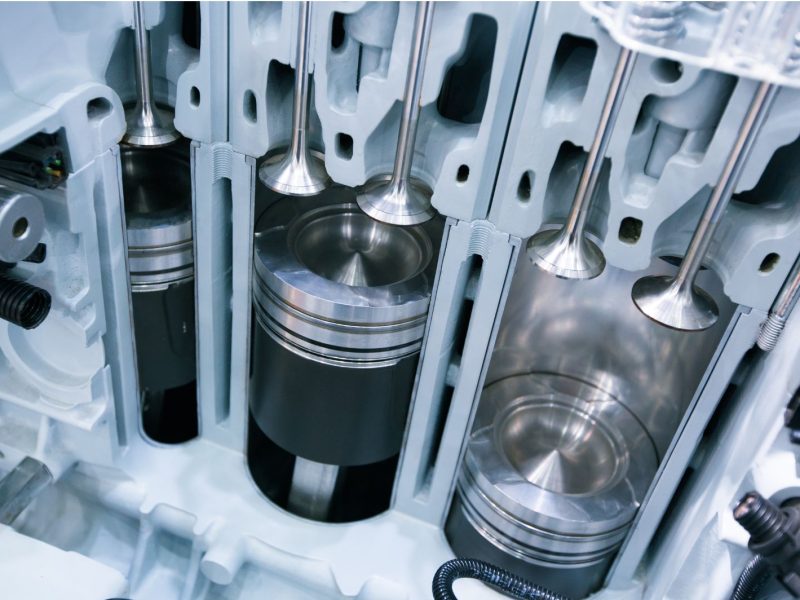Due to its strategic location, San Antonio, Texas, plays a pivotal role in the national supply chain. The city has a busy network of roads and highways that continuously facilitate the transportation of goods to various distribution centers, warehouses, and manufacturing facilities. However, large semi-trailer trucks pose complex challenges for the city’s infrastructure.
Despite efforts to adapt the city’s infrastructure for semi-trailer trucks, accidents can and do occur, often with severe consequences, including injuries, fatalities, and significant property damage. In such instances, securing the services of semi-trailer truck wreck lawyers in San Antonio is crucial for navigating the aftermath and providing legal and financial support to the affected individuals and families. Concurrently, San Antonio continues to innovate in designing truck-friendly infrastructure, emphasizing safety and efficiency.
Table of Contents
Understanding the Unique Challenges of Semi-Trailer Trucks
To accommodate semi-trailer trucks within urban infrastructure, it’s crucial to comprehend their distinct challenges. These vehicles, far more significant and heavier than passenger cars, can weigh up to 80,000 pounds and stretch 75 feet long, necessitating durable roads, wider lanes, and considerable stopping distances for safe travel. Their size demands infrastructure capable of handling their weight and dimensions to prevent roadway damage and ensure safety.
Moreover, the semi-trailer’s length and articulation challenge maneuverability, especially in confined areas or at sharp turns. Designing intersections and roundabouts requires careful consideration of these trucks’ turning radius to facilitate smooth navigation. Additionally, the substantial difference in acceleration and deceleration times between these trucks and smaller vehicles complicates merging and stopping, calling for thoughtful traffic flow management.
Designing Truck-Friendly Road Geometry
San Antonio is enhancing its infrastructure by implementing truck-friendly road geometry to accommodate semi-trailer trucks. This involves widening lanes to at least 12 feet, allowing these large vehicles to maneuver more efficiently and reducing the risk of collisions. Additionally, highways are being upgraded with extended acceleration and deceleration lanes, enabling trucks to merge or exit safely. At the same time, curves and grades are designed to be gradual to prevent accidents like rollovers.
Moreover, ensuring structures such as overpasses and bridges offer enough vertical clearance is vital to accommodate the height of semi-trailer trucks, preventing collisions. The city also focuses on installing truck-specific signage, including warnings for steep grades or low clearances, to guide truck drivers effectively. These initiatives are part of San Antonio’s broader effort to create a safer, more efficient roadway system that supports the trucking industry and serves the community’s needs.
Implementing Intelligent Transportation Systems
San Antonio is enhancing its infrastructure to accommodate semi-trailer trucks by incorporating intelligent transportation systems (ITS). These systems utilize various technologies, such as sensors and cameras, to monitor traffic conditions in real-time. This setup improves road safety and efficiency for all users and provides crucial data to manage traffic flow and anticipate potential issues. For instance, weigh-in-motion systems assess trucks’ weight and axle configurations on the move, promoting adherence to weight restrictions and safeguarding roadways and structures from potential damage due to overloading.
ITS technologies extend their utility by facilitating compliance checks for trucks, streamlining processes at weigh stations, and providing drivers with critical updates on traffic, construction, or hazards, which aids in safer routing decisions. Additionally, ITS can track truck parking space availability, assisting drivers in locating appropriate rest spots to mitigate fatigue-related risks. By tapping into ITS, San Antonio aims to foster a more efficient and safer environment for freight transportation, highlighting a forward-thinking approach to managing the city’s growing logistical demands.
Collaborating with Industry Stakeholders
By engaging these stakeholders in the planning and design process, San Antonio can ensure that its infrastructure investments are aligned with the needs and priorities of the trucking industry while also taking into account the concerns and interests of the broader community. Some critical areas for collaboration include:
- Identifying high-priority freight corridors: Working with industry partners to determine the most critical routes for freight movement in and around San Antonio can help prioritize infrastructure investments and ensure they are targeted to the areas of greatest need.
- Developing truck route networks: Collaborating with trucking companies and local businesses to build designated truck routes that provide safe and efficient access to key destinations while minimizing impacts on residential neighborhoods and other sensitive areas.
- Promoting driver education and training: Partnering with trucking companies and driver training schools to provide education and outreach on safe driving practices, proper vehicle maintenance, and compliance with regulations can help to reduce the risk of accidents and improve overall safety on the road.
- Fostering open communication and feedback: Establishing regular channels for communication and feedback between industry stakeholders and transportation planners can help identify emerging issues and opportunities for improvement and ensure that San Antonio’s infrastructure remains responsive to the evolving needs of the trucking industry.
Addressing Community Impacts and Concerns
San Antonio’s approach to accommodating semi-trailer trucks focuses on balancing economic advancement with community well-being. Addressing noise pollution, air quality, and safety concerns is paramount, especially near vulnerable areas. Proactive engagement with residents to gather input on infrastructure projects is essential, ensuring planning incorporates community feedback. Strategies to mitigate adverse impacts include adopting technologies for cleaner emissions, routing trucks away from residential zones, and enhancing safety features in areas with high pedestrian traffic.
San Antonio employs transparent communication strategies to minimize disruption, keeping communities informed and involved in the planning process. Advanced mitigation measures, such as sound barriers, eco-friendly vehicles, and strategic route planning, help preserve neighborhood tranquility and safety. This holistic approach demonstrates San Antonio’s commitment to harmonizing its transport infrastructure with the needs and priorities of its residents, setting a standard for urban and community-aligned transport planning.
Planning for Future Growth and Sustainability
San Antonio’s approach to truck-friendly infrastructure planning goes beyond current needs, aiming to accommodate the expected surge in freight transportation while ensuring future growth and sustainability. With e-commerce and just-in-time delivery driving up demand, the city’s transportation system must be prepared for increased truck traffic in the years ahead. This necessitates a comprehensive plan that projects future freight demand and outlines necessary infrastructure investments and policy adaptations to manage that demand effectively and sustainably. Embracing advanced technologies like electric and autonomous vehicles, alongside investing in alternative freight modes and intermodal facilities, plays a crucial role in meeting these future challenges.
Sustainability and resilience against climate change are pivotal in these plans, with San Antonio focusing on infrastructure capable of withstanding extreme weather, sea-level rise, and temperature fluctuations. Collaborating with regional, state, and federal partners to align freight transportation strategies ensures a unified approach to fostering a long-term sustainable and competitive industry. Through this proactive, all-encompassing strategy, San Antonio is setting the stage for a transportation system that addresses today’s needs and secures a safer, more efficient future for freight movement.
Supporting Accident Victims and Promoting Accountability
In San Antonio, accidents can still occur despite measures to improve road safety for semi-trailer trucks, highlighting the need for victim support and accountability. Legal experts specializing in truck accidents offer invaluable assistance to victims, guiding them through legal processes to secure necessary compensation. Their thorough investigations and negotiations with insurance companies aim to ensure justice and adequate financial recovery for the injured.
Beyond individual cases, these lawyers advocate for systemic changes to prevent future accidents, contributing to safer road conditions for all. Their efforts extend to seeking policy reforms and improved safety regulations within the trucking industry, emphasizing their commitment to broader public safety and accountability.



